Today, I'm going to teach how to make homemade Bagoong Alamang. After years of perfecting this Filipino shrimp paste, I'm excited to share my family's version with you.
This rich, savory condiment transformed my cooking and became an essential part of our family meals. The beautiful balance of salty, sweet, and umami flavors makes this shrimp paste irresistible whether paired with green mangoes or used to enhance your favorite Filipino dishes.
This recipe takes just 20 minutes but delivers authentic flavor that store-bought versions simply can't match. Follow along as I share all my secrets for making the perfect Bagoong Alamang at home.
What is Bagoong Alamang?
Bagoong Alamang is a traditional Filipino shrimp paste made from fermented small shrimp or krill mixed with salt. This chunky, pungent condiment is a cornerstone of Filipino cuisine, used both as a cooking ingredient and as a dipping sauce. Unlike watery fish-based bagoong, Alamang has a thicker consistency and distinctive flavor that adds depth to many Filipino dishes.
Jump to:
Why You'll Love This Recipe
This authentic Bagoong Alamang recipe brings the rich, umami flavor of Filipino cuisine right to your kitchen! The perfect balance of saltiness and sweetness makes this shrimp paste an essential condiment for countless Filipino dishes.
You'll love how this homemade version allows you to control the sweetness and saltiness to your preference while maintaining that distinctive flavor that store-bought versions can't match.
Plus, it's surprisingly easy to make and will elevate your Filipino cooking to restaurant quality.
Ingredients
I carefully selected these ingredients to create the perfect flavor balance in this Bagoong Alamang. The raw shrimp paste provides that authentic seafood base, while pork with fat adds richness and depth.
Garlic, onion, and tomato create a savory foundation that mellows the strong shrimp flavor. Sugar balances the saltiness of the paste, and vinegar adds just enough tanginess to brighten all the flavors.
This combination transforms the raw paste into a complex condiment that enhances every dish it touches.
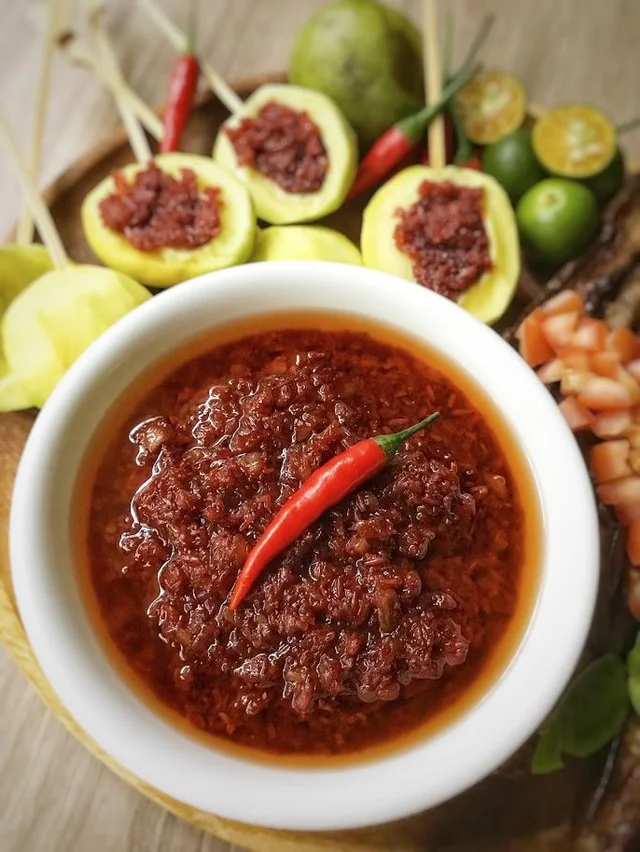
- 12 ounces raw shrimp paste (bagoong alamang)
- 4 ounces pork with fat, finely sliced
- 1 medium tomato, diced
- 1 small onion, minced
- 3 cloves garlic, minced
- 3½ tablespoons sugar
- 3 teaspoons vinegar
Equipment
- Medium-sized heavy-bottomed pan
- Wooden spoon or heat-resistant spatula
- Measuring spoons
- Cutting board and knife
- Airtight container for storage
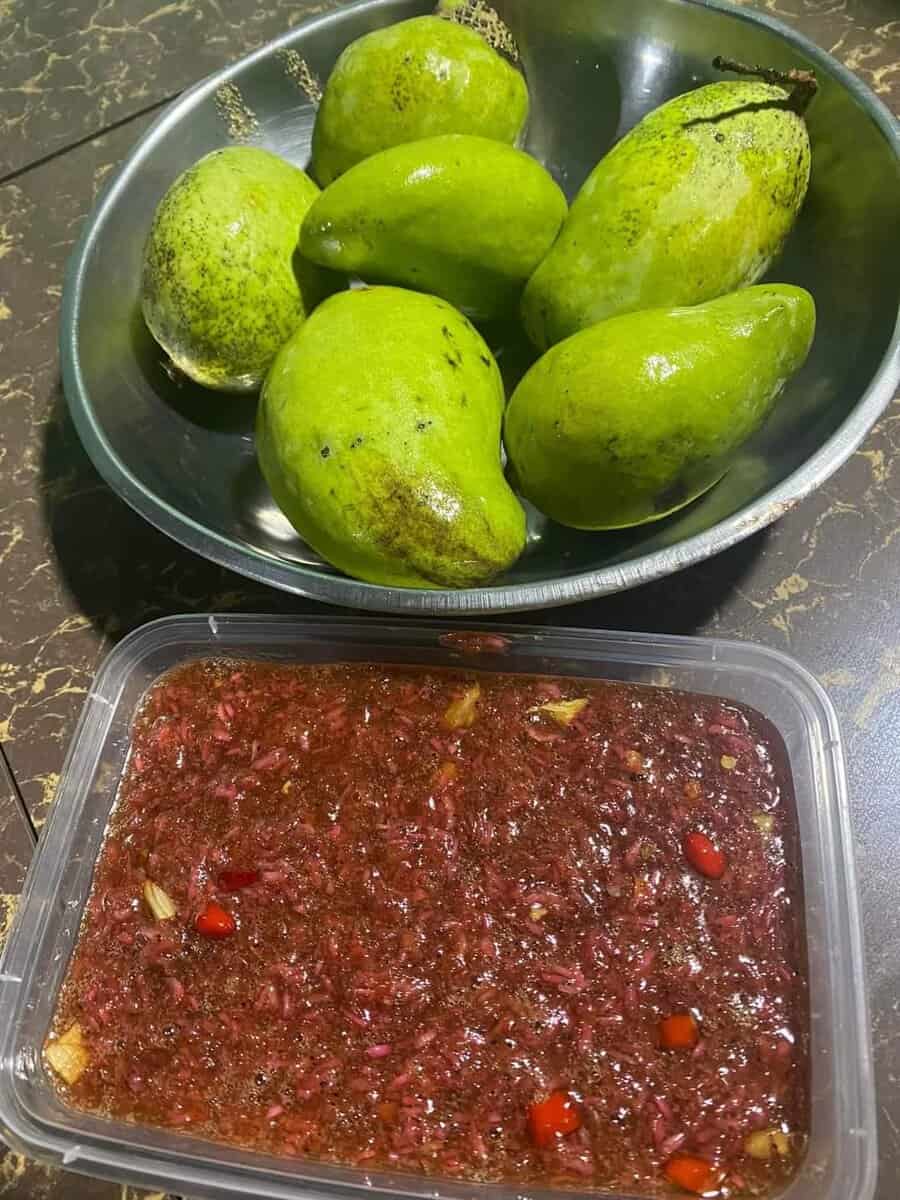
How To Make
- Heat a pan over medium heat. Add the sliced pork and cook until the fat renders and the meat begins to brown (about 3-4 minutes).
- Add the minced garlic and sauté until fragrant and lightly golden, about 1 minute.
- Add the minced onion and continue sautéing for 2 minutes until translucent.
- Add the diced tomato and sauté for an additional 2-3 minutes until softened.
- Add the raw shrimp paste, sugar, and vinegar to the pan. Stir well to combine all ingredients.
- Reduce heat to low, cover the pan, and simmer for about 15 minutes, stirring occasionally to prevent sticking and to ensure even cooking.
- Once the mixture has thickened slightly and developed a rich aroma, remove from heat.
- Allow to cool before transferring to a serving bowl or storage container.
- Serve as a condiment with green mangoes or use as an ingredient in other Filipino dishes.

Tips from Lola's Kitchen
- Washing the Raw Shrimp Paste: For less saltiness, rinse the raw shrimp paste with water and drain well before cooking.
- Achieving the Perfect Balance: Add sugar gradually, tasting as you go to get the perfect balance of sweet and salty.
- Enhanced Flavor: Add a small piece of ginger during cooking to remove any overly fishy taste.
- Customized Heat: For a spicy version, add 1-2 chopped bird's eye chilies (siling labuyo) during the sautéing process.
- Traditional Touch: Using pork back fat gives an authentic flavor, but vegetable oil works well too.
Substitutions
- Pork: Can be replaced with 2 tablespoons of vegetable oil if you prefer a meat-free version.
- Sugar: Brown sugar can be used instead of white sugar for a deeper molasses flavor.
- Vinegar: Apple cider vinegar or cane vinegar (sukang iloko) can replace regular white vinegar.
- Raw Shrimp Paste: If you can't find raw shrimp paste, you can use bottled bagoong and adjust the salt and sugar to taste.
Troubleshooting
- Too Salty: Add more sugar and a little more vinegar to balance the saltiness.
- Too Sweet: Add a small amount of vinegar or lemon juice to cut through the sweetness.
- Too Watery: Continue cooking uncovered to reduce the liquid and thicken the paste.
- Too Thick: Add a tablespoon of water and continue cooking to achieve desired consistency.
Storage & Reheating
- Storage: Store in an airtight container in the refrigerator for up to 3-4 weeks. The flavor actually improves after a few days as the ingredients meld together.
- Freezing: Can be frozen in smaller portions for up to 3 months. Thaw in the refrigerator overnight before using.
- Reheating: Gently warm in a small pan over low heat, adding a splash of water if needed to restore consistency.
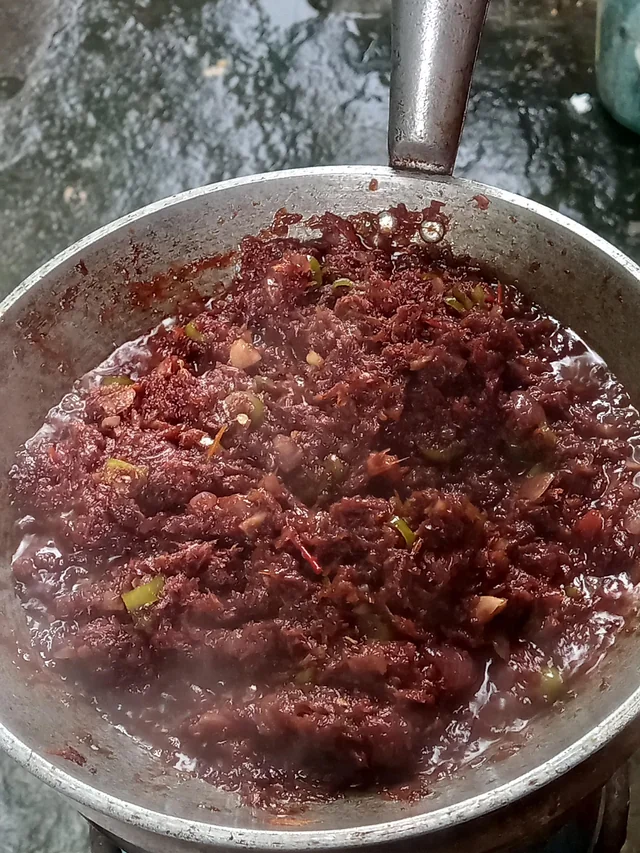
FAQ
What makes Bagoong Alamang different from other types of bagoong?
Bagoong Alamang is made specifically from small shrimp or krill, giving it a chunky texture compared to fish bagoong which is usually more liquid. It has a distinctive flavor profile that's essential to authentic Filipino cuisine.
Is homemade Bagoong Alamang better than store-bought?
Homemade allows you to control the saltiness, sweetness, and additions like garlic and onions. Many find the homemade version more flavorful and aromatic than commercial options.
How can I reduce the strong smell while cooking?
Ensure good ventilation in your kitchen. Adding ginger and making sure to cook it thoroughly helps reduce the pungent aroma.
Can I make this recipe vegetarian?
While traditional Bagoong Alamang is made from shrimp, there are vegetarian versions made from tofu and seaweed that mimic the umami flavor. However, these would be different recipes entirely.
How do I know when my Bagoong Alamang is fully cooked?
The mixture should have thickened slightly, the raw smell should be gone, and it should have developed a rich, aromatic smell. The color will also deepen to a darker red-brown.
Can I adjust the recipe for a larger batch?
Yes, simply double or triple all ingredients proportionally. Just be sure to use a larger cooking vessel and increase the cooking time slightly to ensure it's thoroughly cooked.
Related
Looking for other recipes like this? Try these:
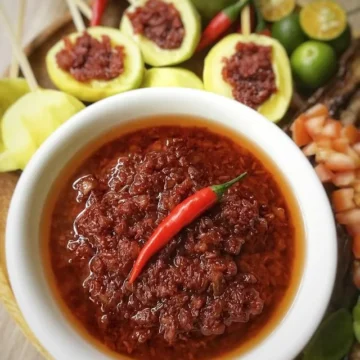
Homemade Bagoong Alamang (Filipino Shrimp Paste)
Ingredients
- 12 ounces raw shrimp paste bagoong alamang
- 4 ounces pork with fat finely sliced
- 1 medium tomato diced
- 1 small onion minced
- 3 cloves garlic minced
- 3½ tablespoons sugar
- 3 teaspoons vinegar
Instructions
- Heat a pan over medium heat. Add the sliced pork and cook until the fat renders and the meat begins to brown (about 3-4 minutes).
- Add the minced garlic and sauté until fragrant and lightly golden, about 1 minute.
- Add the minced onion and continue sautéing for 2 minutes until translucent.
- Add the diced tomato and sauté for an additional 2-3 minutes until softened.
- Add the raw shrimp paste, sugar, and vinegar to the pan. Stir well to combine all ingredients.
- Reduce heat to low, cover the pan, and simmer for about 15 minutes, stirring occasionally to prevent sticking and to ensure even cooking.
- Once the mixture has thickened slightly and developed a rich aroma, remove from heat.
- Allow to cool before transferring to a serving bowl or storage container.
- Serve as a condiment with green mangoes or use as an ingredient in other Filipino dishes.
Tips from Lola's Kitchen
- Washing the Raw Shrimp Paste: For less saltiness, rinse the raw shrimp paste with water and drain well before cooking.
- Achieving the Perfect Balance: Add sugar gradually, tasting as you go to get the perfect balance of sweet and salty.
- Enhanced Flavor: Add a small piece of ginger during cooking to remove any overly fishy taste.
- Customized Heat: For a spicy version, add 1-2 chopped bird's eye chilies (siling labuyo) during the sautéing process.
- Traditional Touch: Using pork back fat gives an authentic flavor, but vegetable oil works well too.
The Story Behind Bagoong Alamang
Bagoong Alamang has been a cornerstone of Filipino cuisine for centuries, with origins dating back to pre-colonial times. This beloved shrimp paste emerged as a practical preservation method in the coastal regions of the Philippines, where abundant harvests of tiny shrimp and krill needed to be stored for future use during less plentiful seasons.
The ingenious process of fermenting small shrimp with salt not only preserved the catch but transformed it into something greater—a flavor-packed condiment that would become essential to Filipino cooking. In coastal villages across the archipelago, families developed their own special recipes, passing down techniques from generation to generation.
What makes Bagoong Alamang truly special is how it embodies the Filipino talent for creating something extraordinary from simple ingredients. This humble condiment connects modern Filipino kitchens to an ancient culinary heritage that spans thousands of islands and countless family traditions.
When Spanish colonizers arrived in the 16th century, they documented the widespread use of fermented seafood pastes in local cuisine, noting how central these condiments were to daily meals. Today, Bagoong Alamang remains just as important, finding its way into beloved dishes like Binagoongan (pork with shrimp paste) and Kare-Kare (oxtail stew), where it provides that distinctive umami flavor that defines authentic Filipino food.
In my family, making Bagoong Alamang was a special occasion that brought everyone together. The process might have been simple, but the results were extraordinary—a thick, flavorful paste that transformed even the simplest green mango into a memorable treat. This recipe honors that tradition while making it accessible for today's home cooks.
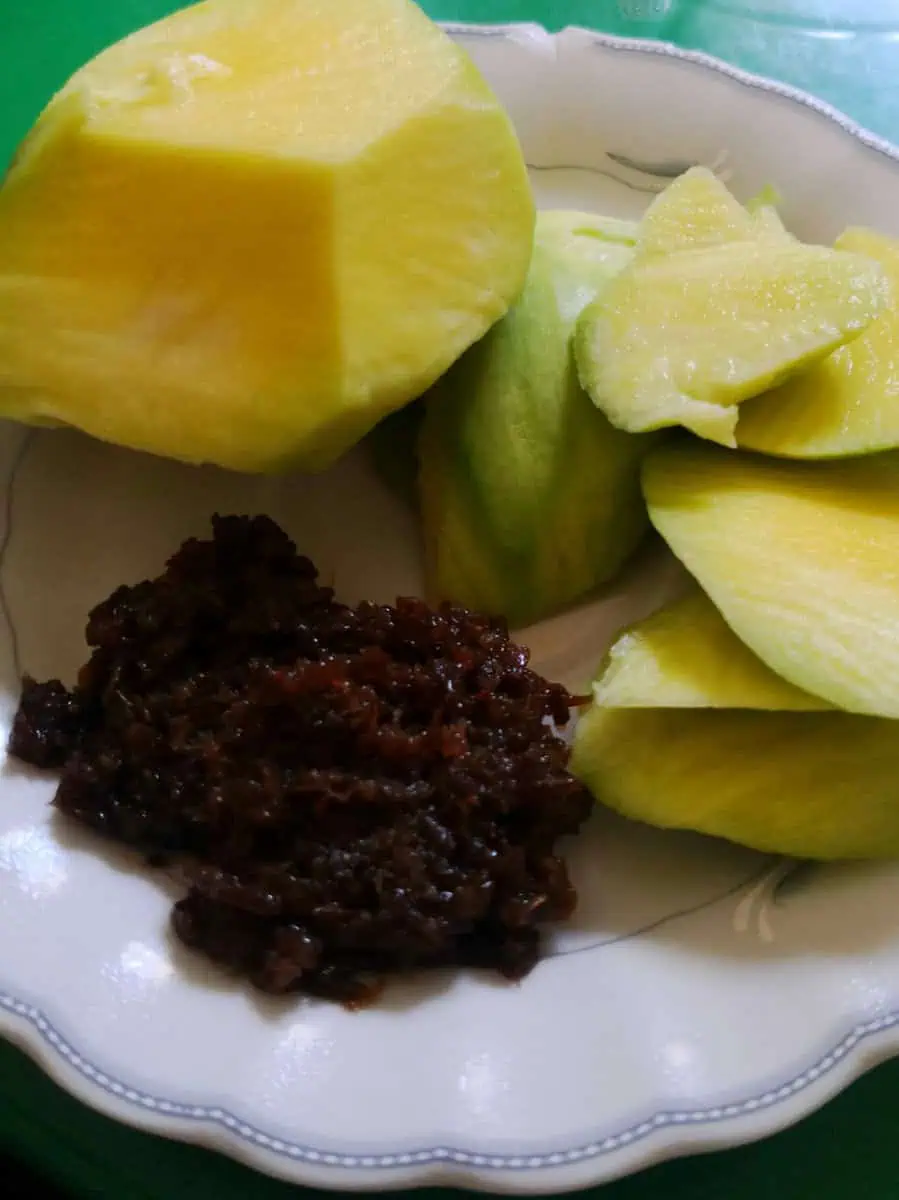



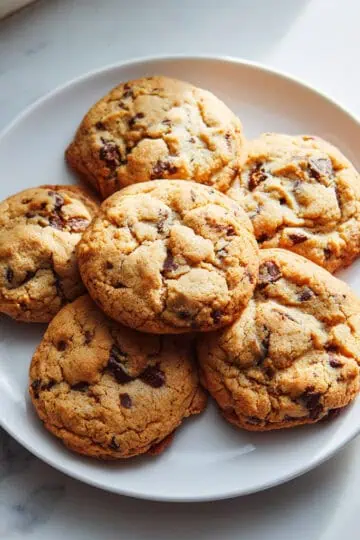




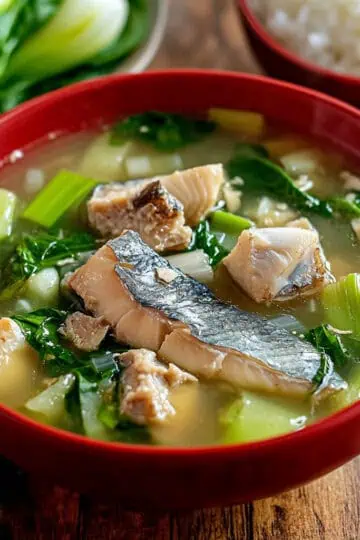
Comments
No Comments